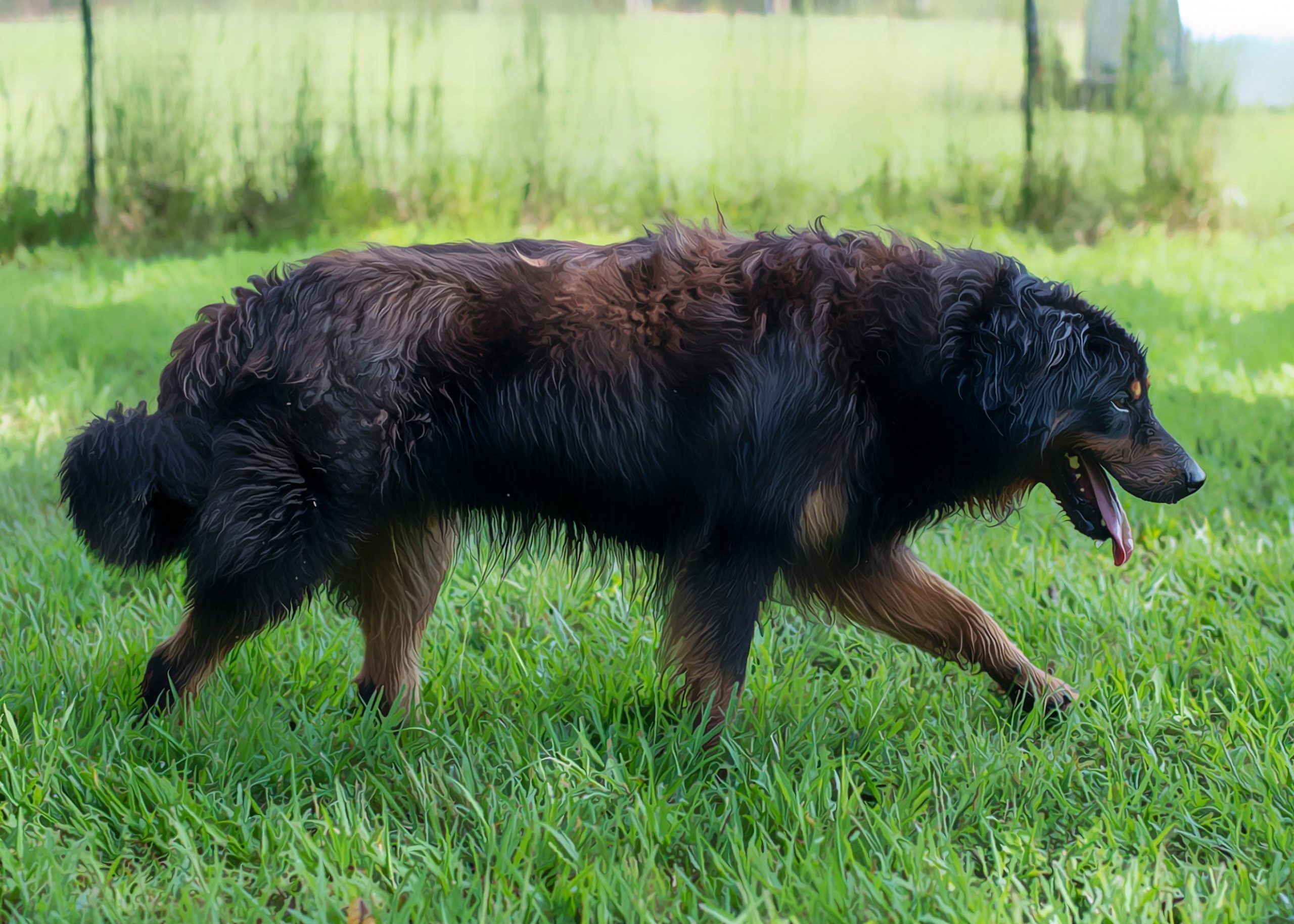Abstract
This short article examines the bloodline connection among 15 male Black and Tan English Shepherds using canine genetics, specifically focusing on their shared paternal haplogroup A1a and haplotypes H1a.29 and H1a.48. By analyzing the DNA test results provided by Embark Vet, we determined that these dogs exhibit a close genetic relationship, supported by their consistent history, phenotype, and background.
Introduction
English Shepherds, particularly the Black and Tan variant, are known for their intelligence, loyalty, and herding abilities. Through DNA testing, breeders and dog owners can delve into the fascinating world of canine genetics to understand the lineage and relationships among dogs in a breed. We have tested over a dozen male ESBT through Embark Vet, and we have received the Embark Vet results of several other ESBT males from breed community members. This short article will discuss how to read the paternal haplotypes of male Black and Tan English Shepherds (ESBT) and the implications of consistent DNA test results among dogs from various breeding backgrounds.
Unraveling the Genetic Connection: Haplogroup A1a
DNA testing of male ESBTs by Embark Vet revealed that all the tested dogs share the paternal haplogroup A1a, indicating a common paternal ancestor. Haplogroups are groups of closely related haplotypes that trace lineage and evolutionary relationships among different haplotypes. The A1a classification suggests a relatively close genetic relationship among these dogs.
Common Haplotypes: H1a A1a.29 and H1a A1a.48
The tested male ESBTs belong to either the H1a A1a.29 or the H1a A1a.48 haplotype within the A1a haplogroup. Both haplotypes are part of the same subgroup (A1a) and branch (H1a), emphasizing the genetic connection between the dogs. However, the unique identifiers (.29 and .48) indicate genetic differences between the haplotypes, reflecting variations accumulated over generations—a desirable trait in breeding.
Shared History and Phenotype
In addition to their genetic similarities, the tested male ESBTs share a similar history and phenotype. These dogs have a strong working background, are well-built and athletic, and display the classic black and tan coat pattern. The shared traits provide further evidence supporting the notion that these dogs belong to the same bloodline, regardless of their breeder backgrounds.
Conclusion
The consistent DNA test results among male ESBTs with haplogroup A1a and haplotypes H1a A1a.29 and H1a A1a.48 demonstrate the power of canine genetics in understanding breed relationships and lineage. By examining Y-chromosome haplotypes, we can uncover the shared ancestry among ESBTs and appreciate the genetic diversity within the English Shepherd breed. While haplotype information provides valuable insights, additional genetic markers, such as microsatellites and single nucleotide polymorphisms (SNPs), can be used to further refine our understanding of ESBT bloodline relationships, especially when combined with pedigree information and phenotype analysis. The study of canine genetics continues to enrich our knowledge and appreciation of our beloved canine companions.
Afterword
Both microsatellites and single nucleotide polymorphisms (SNPs) can be used to establish bloodlines in animals, including dogs. By analyzing the patterns of these genetic markers in a group of individuals, researchers can assess the relatedness between them, trace ancestry, and determine population structure.
Microsatellites, due to their high variability and abundance in the genome, have been widely used in parentage testing, pedigree analysis, and population genetics. In the context of establishing bloodlines, microsatellites can help identify the parents of an individual, confirm pedigree information, and reveal the degree of inbreeding within a population or breed.
SNPs, being the most common type of genetic variation, can also be used to establish bloodlines. Large-scale SNP genotyping allows researchers to examine thousands of genetic markers simultaneously, providing a high-resolution view of an individual’s genetic makeup. SNPs can be used to investigate the relatedness between individuals or populations, trace ancestry, and study breed-specific traits or diseases.
Both microsatellites and SNPs can be employed in combination with other genetic tools, such as haplotypes or whole-genome sequencing, to provide a comprehensive understanding of an individual’s or breed’s bloodline. By using these genetic markers, researchers can reconstruct pedigrees, confirm relationships, and assess the genetic diversity of breeds or populations, which can be valuable for breed conservation, management, and health-related studies.
Further Reading
- Ostrander, E. A., Wayne, R. K., Freedman, A. H., & Davis, B. W. (2017). Demographic history, selection and functional diversity of the canine genome. Nature Reviews Genetics, 18(12), 705-720.
- Parker, H. G., Dreger, D. L., Rimbault, M., Davis, B. W., Mullen, A. B., Carpintero-Ramirez, G., & Ostrander, E. A. (2017). Genomic analyses reveal the influence of geographic origin, migration, and hybridization on modern dog breed development. Cell Reports, 19(4), 697-708.
- vonHoldt, B. M., Pollinger, J. P., Lohmueller, K. E., Han, E., Parker, H. G., Quignon, P., … & Ostrander, E. A. (2010). Genome-wide SNP and haplotype analyses reveal a rich history underlying dog domestication. Nature, 464(7290), 898-902.
- Boyko, A. R., Quignon, P., Li, L., Schoenebeck, J. J., Degenhardt, J. D., Lohmueller, K. E., … & Bustamante, C. D. (2010). A simple genetic architecture underlies morphological variation in dogs. PLoS Biology, 8(8), e100045

